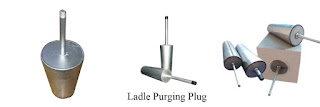Factors affecting the quality of tundish repair
1. Loose Wall
The looseness of the tundish wall is mainly reflected in the contact position between the tundish wall and the bottom of the tundish. The looseness of the wall is manifested in two forms: one is that it extends longitudinally from the position of the wall to form an irregular surface; The other is that the elongated powder falls down to form a "slit shape". There are two reasons for the looseness: one is that the binder volatilizes, resulting in a decrease in the overall bonding strength, especially the outermost one; the other is that the fine powder containing resin does not wrap the particles, which eventually causes slag to fall off easily. The low-temperature baking strength and medium-temperature strength of the dry-type material can be better improved by mixing boron glass powder and phenolic resin in the magnesium dry-type material.Based on the site conditions, it was found that the reasons for the low quality of the tundish repair were as follows:
(1) The tundish fabric was unreasonable. The ratio of the binder in the current tundish is relatively low, and there is a phenomenon of piled up and concentrated distribution during the construction of the masonry, which leads to the segregation of large-grained magnesia in the dry material.
(2) The vibration time of the wrapped tire is long. At present, 4 motors are used for tire wrapping in the tundish. In order to increase the compactness at the position of the slag line, the vibration time is 15 minutes. Although the bulk density of the tundish dry material is increased, the lower dry material aggregate and powder are prone to separation, and the phenomenon of "bridging" between the dry material is prone to occur, causing the bag wall to loosen.
(3) The lower baking temperature of the tundish is low. The flame of the burner cannot reach the bottom, the temperature of the upper part of the tire is high, and the temperature of the lower part is relatively low, resulting in insufficient reaction temperature and low strength of the dry material that is about to harden. But still relatively loose.
2. Cracks in cladding wall
Horizontal stripes appear on the bag wall at the head of the middle bag. The dry material thickness at this position is 110 mm, and the crack depth is 40 mm. The main reason is that the current release agent is applied once, the thickness is only 0.1-0.2 mm, and the application is uneven, causing the tundish dry material to stick to the tire, and cracks to the dry material after the tire is started. Stress concentrations were created during lifting of the tire mold, which in turn caused surface cracks.3. The shape of the upper nozzle does not meet the requirements
The current operating procedures for repairing packages only require that no sundries should be mixed in the nozzle. During operation, workers only use waste woven bags to plug in the nozzle, there is no uniform standard, and there is no reasonable mold, resulting in debris often remaining in the nozzle, and the shape of the tundish upper nozzle is irregular.
Wanhao is a manufacturer who is specialized in designing various kinds of furnace and making refractory products for electric furnace, ladle, tundish, blast furnace, AOD furnace, IF furnace, etc.
Article Source:Factors affecting the quality of tundish repair
More Refractory Products:https://www.wanhaorefractory.com/en/product.html

评论
发表评论